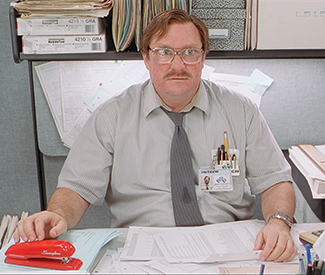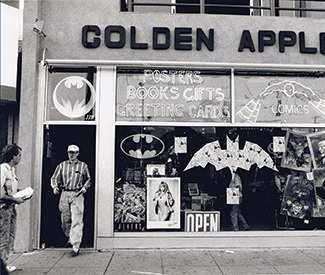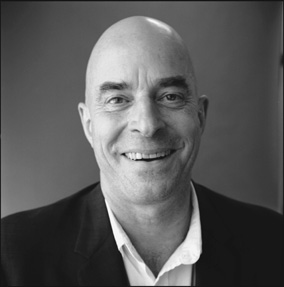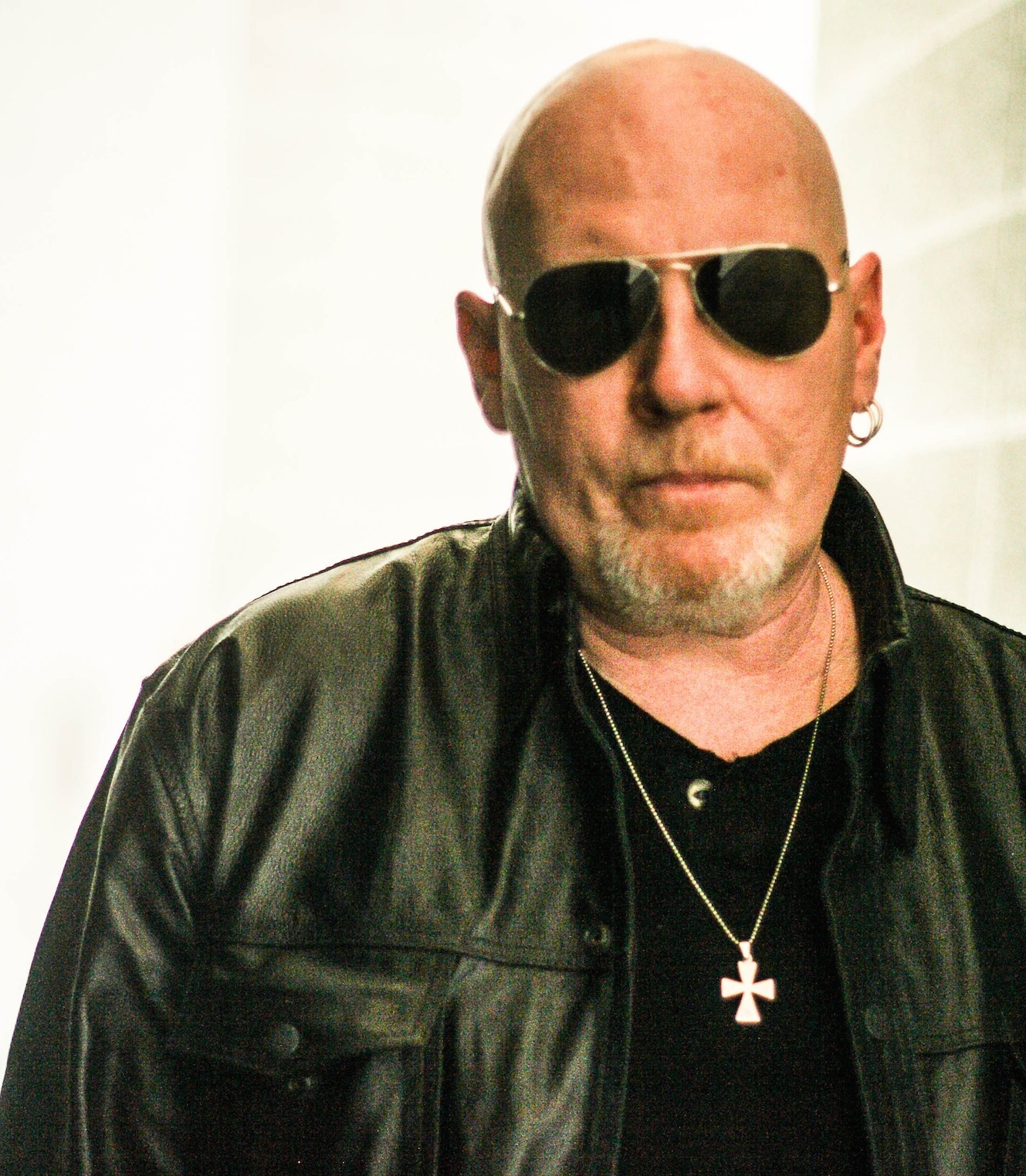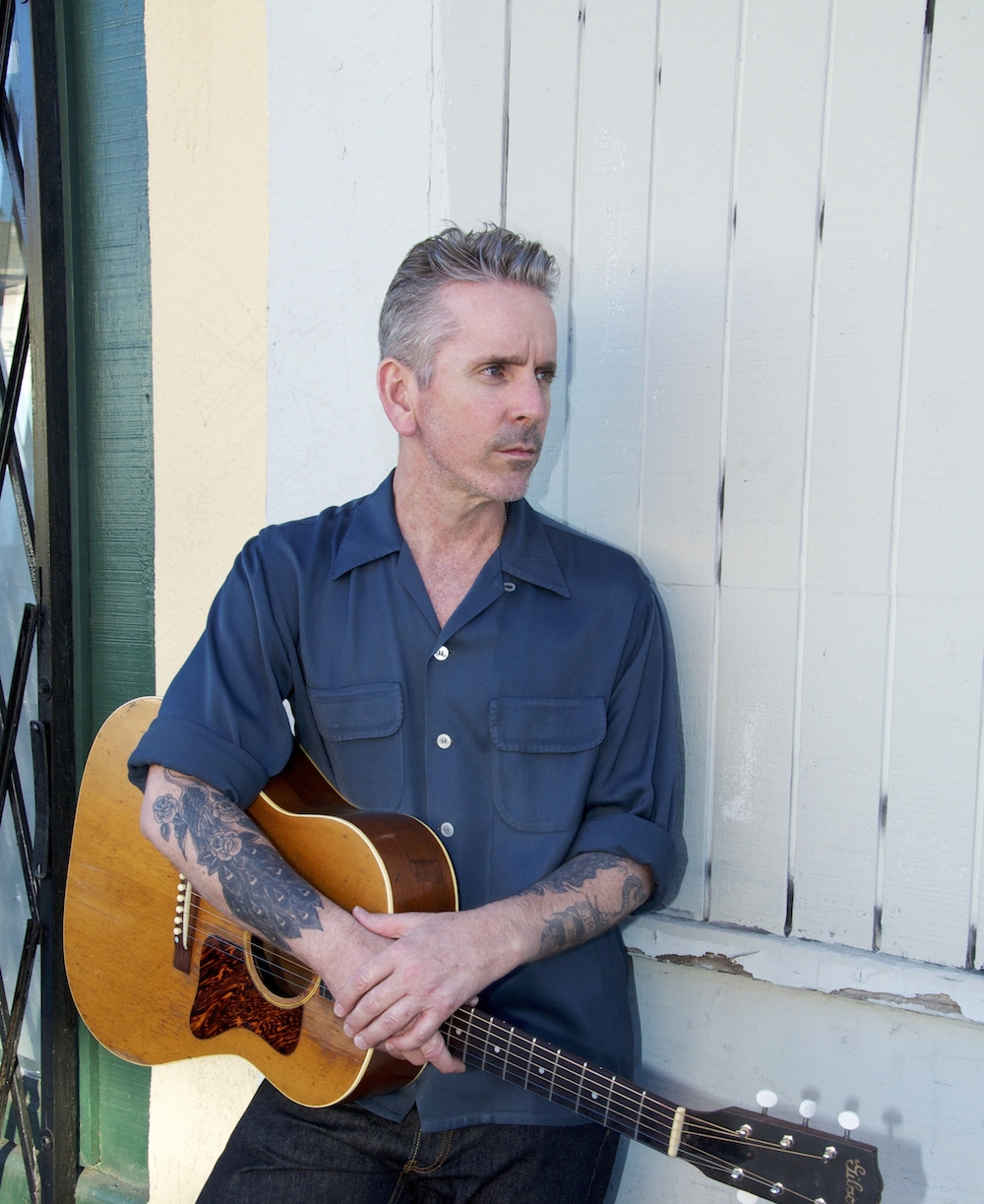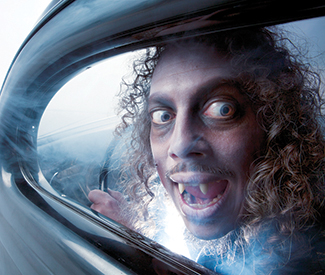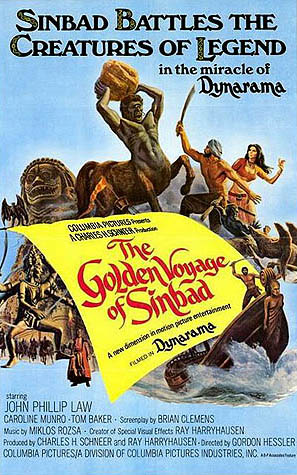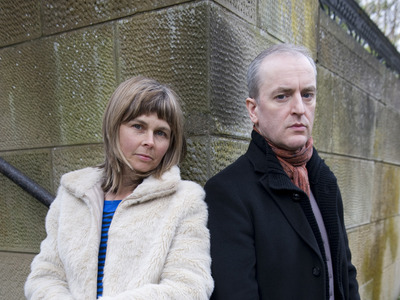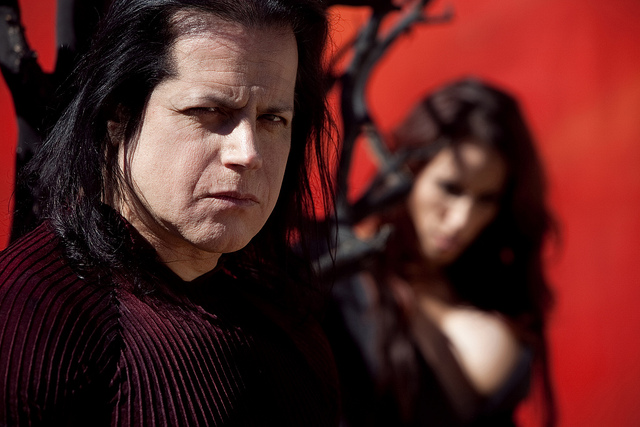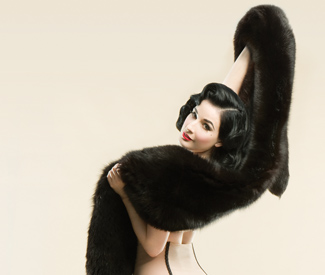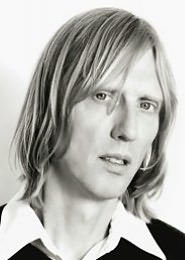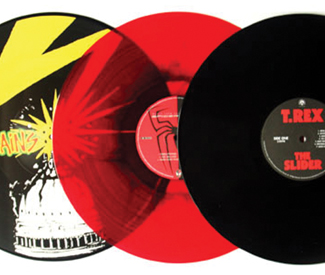Taking the sounds of traditional rockabilly, blues, and jazz and giving them an injection of her own infectious energy and style, Irish chanteuse Imelda May can make listeners swoon at a ballad or jump up to the searing rockers that pepper her excellent new album, Tribal (Verve), which was released last month here in the United States.
May has been rocking stages for well over a decade in the UK, and is finally gaining the popularity here that she and her talented band so rightly deserve — local fans have a chance to see her up close and personal tonight, Oct. 9, when she hits The Fillmore, a follow up headlining gig to her searing set in August at Outside Lands, where she rocked the opening slot on the main Polo Fields stage.
After that performance — where she and her band were one of the standouts of the entire weekend — May sat down for an interview backstage, talking about her new album, touring around the world, and playing a big show in Golden Gate Park.
“I loved it! Great audience. I always love doing festivals abroad, because you can see kinda half of the crowd has come to see you, and then half the crowd don’t know what the hell or who you are. So it’s nice to see if you’re winning people over as you’re going along,” said May in her distinctive Dublin accent.
“There were a lot of people up in the front, kind of thinking, ‘Who is she?’ and then by the end were jumping up and down, and singing back to me, so they were an open crowd.”
The last couple of years have been whirlwind ones for May and her band, as they’ve been steadily building a bigger and bigger fan base, constantly gigging across the globe — which even the now-seasoned veteran of the road admits can get to her occasionally.
“I’ve often said, ‘It’s great to be in…’ and I turn around and say, ‘Where are we? What country are we in? What month is it?” laughed May. “Because you just jump on the bus, you get off, you play, you get back on, sometimes you lose your mind of where you are, or what time zone you’re in.”
Having gotten her start singing while still a teenager growing up in Dublin, Ireland, May was always attracted to the sounds of early rock n’ roll, particularly classic rockabilly — a style that she was advised early on in her career to cut out of her repertoire.
“I love a lot of music, and I started doing roots music, and blues, jazz, rock n’ roll, punk, and then rockabilly of course, and then all of a sudden you’re shunned — why is there no room for the music that basically started rock n’ roll, that started punk? Without it, you wouldn’t have the Beatles, the Rolling Stones, Led Zeppelin…I mean, they started a whole new movement.”
“All of the classic greats over the years — Jeff Beck, Jimmy Page, Marc Bolan, Jimi Hendrix — they all cited rockabilly artists as their influence,” she continued. “And if it wasn’t for them, we wouldn’t be doing anything…so why is it shunned, if it’s that influential? I didn’t get that, so I thought, ‘Screw you!’ and I’m going to do it more, and I’m going to keep going until people hear it, and I knew when people heard it more, they would love it.”
That searing spirit is evident throughout Tribal, where on the title track May sings, “When you look in the mirror, tell me what do you see?/Someone new or your ancestry?/You’re a king, you’re a queen, you’re a wizard, a fool/Or if you’re me, then rockabilly rules.”
That core concept and rebellious attitude have fueled May’s connection with fans, and she shares a basic love for the purity and simplicity of the music.
“Audiences get it. They don’t really care what it’s called, they just know that it feels good, and you go crazy with it. It has no rules, the original rockabilly. It was exciting, it was adventurous, it was thrilling, it was dangerous, it was sexy. It was just fabulous music,” said May.
“And I thought, people now would completely relate to that, so I said, ‘I’m doing it anyway.’”
In 2012, May and her husband Darrel Higham — who is also the ripping guitar slinger in her band — welcomed a baby girl into their lives, and took some time off from the road and performing. One of songs on Tribal, “Little Pixie,” is a sweet ode to their daughter, based on a poem written by her brother.
“I turned it into a song, and I thought it turned out really beautiful,” she said. “I’m from a normal, Dublin working-class family, and I don’t think he believed how great he was. I think this has helped. I was going, ‘This is brilliant!’”
Once the family and band were ready to get back to work, May says the material that comprises Tribal just came out naturally in the writing process — in addition to a tender ballad like “Little Pixie,” there are rollicking and raucous tunes such as “Hellfire Club,” which tells the story of an infamous den of inequity outside the city of Dublin.
After the release of the album, May said she’s been questioned about how becoming a mother didn’t change her writing or singing style to veer away from rock n’ roll — a fact that she finds rather irritating.
“Mothers are feral…your protective instinct comes out. I think being a mother magnifies a lot of stuff within you. I get a lot of interviews, and I cannot tell you how bored I’m getting with it, having them say, ‘So, you’re a mother, how come you’ve written a rock n’ roll album?’ And I’m like, ‘Geez, shoot me now!’” laughed May.
“I’m madly in love with me baby, but you don’t all of a sudden become like, ‘I’m a mother now, I better not rock n’ roll’ — why not? The reality of most people is that you magnify different parts for what you need, so if you’re out partying on a Saturday night, you’re not going to be in that same mood for most people in an office on a Monday morning, you know? It’s the same way as when I’m on stage going crazy: I’m not going to be like that when I’m putting my baby to sleep.”
In addition to her successful albums and touring, May has been delving into other aspects of the entertainment world: She recently started taping episodes of The Imelda May Show back home in Ireland, where she is showcasing artists that might not otherwise have a chance at large-scale exposure.
“I never aspired to be a TV presenter — never, ever — however, I have a great interest in Irish bands and in the music of Ireland. There’s too many good bands, and there’s nothing on [to showcase them] except The Voice or The X Factor. And I think those are TV shows, I don’t think they’re music shows. They’re fun TV shows,” said May.
“I think for bands that are already working, and already gigging, and want to find some kind of platform, as supposed to somebody that just wants to be ‘discovered’ — I think there’s nothing really for them there.”
American fans can find the shows online at www.rte.ie, and catch the incendiary performer live on her U.S. tour, which runs through mid-October, before she heads back to Europe for a slate of gigs scheduled through the end of the year.
“I love it. Tthis is what I do, and I’m really glad I stuck to me guns. I wasn’t going to change for anyone,” said May.
“I wasn’t after fame, so I wasn’t going to change to chase something I didn’t really want. I just wanted to make good music.”
IMELDA MAY
Thu/9, 8pm, $29.50
The Fillmore
1805 Geary, SF
(415) 346-6000

